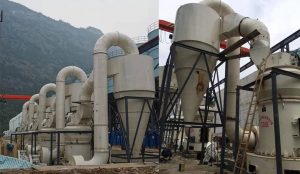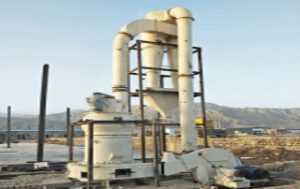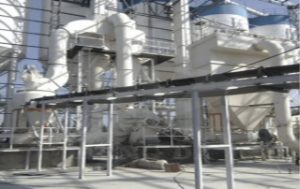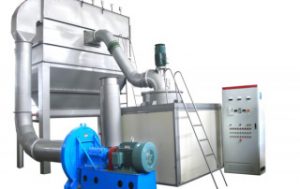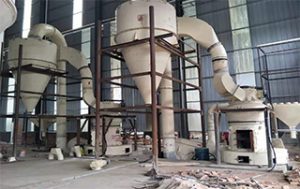What is limestone
Limestone is mainly composed of calcium carbonate (CaCO3). Lime and limestone are a large number of raw materials used in building materials and industry. Limestone can be directly processed into stone and fired into quicklime. Quicklime Cao absorbs moisture or adds water to become hydrated lime. The main component of hydrated lime is Ca (OH) 2, which can be called calcium hydroxide. Hydrated lime is prepared into lime slurry and lime paste, which can be used as coating material and brick and tile adhesive.


Difference: limestone is a mixture; Calcium carbonate is a compound (right)
Calcium carbonate is the main component of limestone, which is the main raw material for the production of glass. Lime and limestone are widely used as building materials and important raw materials for many industries. Calcium carbonate can be directly processed into stone and fired into quicklime. Lime includes quicklime and hydrated lime. The main component of quicklime is Cao, which is generally massive, pure white, light gray or light yellow when containing impurities. Quicklime absorbs moisture or adds water to become hydrated lime. Hydrated lime is also called hydrated lime. Its main component is Ca (OH) 2. Hydrated lime is mixed into lime slurry, lime paste, lime mortar, etc., which is used as coating material and brick and tile adhesive. Cement is prepared by mixing limestone and clay and calcining at high temperature. Glass is made by mixing limestone, quartz sand and soda ash (sodium carbonate) and melting at high temperature. Iron making uses limestone as flux to remove gangue. Quicklime is used as slagging material for steelmaking to remove harmful impurities such as sulfur and phosphorus. Calcium carbide (mainly composed of CaC2) is prepared by the reaction of quicklime and coke in an electric furnace. Soda ash is prepared from limestone, salt, ammonia and other raw materials through multi-step reaction (Solvay process). Caustic soda (causticization) is prepared by the reaction of hydrated lime and soda ash. Bleached lime was prepared by the reaction of pure hydrated lime and chlorine. Calcium chloride, calcium nitrate, calcium sulfite and other important calcium salts are prepared by chemical processing of limestone. Hydrated lime can remove the temporary hardness of water and is used as hard water softener. Limestone is processed into pure powdered calcium carbonate, which is used as filler for rubber, plastics, paper, toothpaste, cosmetics, etc. Alkali lime made of lime and caustic soda, used as an absorbent of carbon dioxide. Quicklime is used as desiccant and disinfectant. In agriculture, quicklime is used to prepare lime sulfur mixture, Bordeaux liquid and other pesticides. The application of hydrated lime in soil can neutralize the acidity of soil, improve the structure of soil and supply calcium required by plants. Brush the trunk with lime slurry to protect the trees.
Shan Fei powder: used to produce anhydrous calcium chloride. It is an auxiliary raw material for the production of sodium dichromate. Main raw materials for glass and cement production. In addition, it is also used for building materials and poultry feed.
Shuangfei powder: it is a raw material for the production of anhydrous calcium chloride and glass, white filler for rubber and paint, and building materials.
Sanfei powder: used as filler for plastics, paint putty, paint, plywood and paint.
Fly ash: used as filler for wire insulation, rubber molded products and asphalt felt.
Calcium carbonate is an important building material. White and pure calcium carbonate rock is called white marble, which can be directly used as decorative stone pillars or handicrafts; Calcium carbonate with beautiful patterns due to impurities is called marble, which is used for veneering or laying the ground on the outer and inner walls of buildings; Dense calcium carbonate rock (limestone) can also be directly used for building houses, but the main purpose of limestone is to produce cement. The white stone containing more than 90% CaCO3 is crushed, graded and separated by Raymond mill or other high-pressure mill.
Limestone grinding process flow
Stage I: crushing
Large limestone materials are crushed by the crusher to the feed fineness (less than 30mm) that can enter the pulverizer.
Stage 2: material grinding
The crushed small limestone materials are sent to the raw material bin through the elevator, and then sent to the grinding chamber of the mill evenly and quantitatively through the vibrating feeder for grinding. After grinding, the milled materials are graded by the analyzer. Those whose fineness meets the specification flow into the large cyclone collector with the wind, and then discharged into finished products through the discharge valve. Those whose fineness is unqualified cannot be screened by the analyzer, but still fall back to the host for re grinding.
Stage III: storage or packaging of finished products in cans
① The finished products discharged from the discharge valve are transported to the finished product tank for storage by pneumatic conveying equipment.
② The finished products discharged from the discharge valve are packaged by a double mouth packaging machine.
③ The finished products discharged from the discharge valve are packaged by the ton baler.


